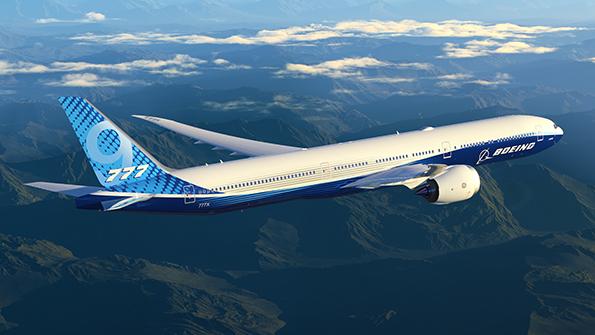
The COVID-19 pandemic and the Russia-Ukraine war, in largely different ways, have both affected commercial aviation markets. But one impact they have in common is that they have accelerated a marked split in fortunes between single-aisle and twin-aisle jetliners. The two crises created a bifurcation: These once-equal market segments are headed in very different directions.
The operative word here is “accelerated.” The shift to single-aisles has been apparent for years. Backlog and delivery numbers both show this, although the percentage of twin-aisle deliveries was boosted in 2019 and 2020 by the Boeing 737 MAX line shutdown. By the first quarter of this year, twin-aisle deliveries and backlogs by value had declined to just 30% of the market.
This percentage is an all-time low since twin-aisles first entered the market. The long-term average for deliveries during the past 30 years was 48%. But backlogs have trended steadily down, from a peak of 62% twin-aisles in 2008 to just 31% in 2021.
Twin-aisle orders have now completely collapsed. Last year, Airbus and Boeing received 1,416 net new jetliner orders; not a bad year at all, surprisingly. But only 54 of these were for twin-aisle passenger jetliners. The first quarter of this year saw negative 87 twin-aisle passenger orders, most of which were AirAsia’s Airbus A330neo cancellations.
Route fragmentation is the long-term trend driving single-aisles upward and twin-aisles downward, aided and enabled by the latest generation of new, more capable Neo and MAX jets. But then the pandemic hit international traffic first, most and longest. This created a terrible twin-aisle overcapacity situation. The growing role of third-party finance made the problem worse for twin-aisles, for the simple reason that lessors and other financiers prefer to finance single-aisles due to their much larger client base.
The pandemic-induced downturn also reminded fleet planners that small is beautiful, or as ex-American Airlines CEO Robert Crandall once remarked, nobody ever went bankrupt flying an airplane that was too small. Flexible point-to-point routes, whenever allowed by the growing range capabilities of new single-aisles, are in vogue, whether transatlantic, intra-Asia or elsewhere. Widebodies for hub-and-spoke networks are out. AirAsia has belatedly realized that its future growth prospects depend on A321neos, not A330neos.
All of this was bad enough for twin-aisles. But now, the Russia-Ukraine war is making the situation worse for twin-aisles and unexpectedly even better for single-aisles. Although Russia itself is a tiny twin-aisle market, global fear and uncertainty will likely slow the international traffic recovery.
Single-aisles are poised to benefit from the war because—aside from Russia’s minuscule market and China’s hopefully temporary pandemic lockdown problem—domestic air travelers are roaring back and, more important, fuel prices have skyrocketed due to war- and sanctions-related supply issues.
Domestic routes are a commodity service in which airlines have basically minimal pricing power. Domestic service economics, therefore, depend on cost control. When fuel is $100 per barrel, if one airline has a Neo or MAX and its competitor does not, then the airline with the modern jet can out-price and out-profit the competition.
Obviously, there are many other variables, but most airlines are mindful of the need to reequip with single-aisles that offer 12-15% lower fuel burn than older jets. Thus, unlike twin-aisles, single-aisle output is governed partly by production constraints, not market demand.
The result is a very K-shaped market recovery, with twin-aisles trending down and single-aisles trending up. Our forecast assumes that what was once a 50-50 single-aisle/twin-aisle market (by value) will stay at 70-30 for most of this decade. This will have big implications for the two primes and their suppliers and financiers. But again, looking at order numbers and announced fleet plans, it is quite possible that things will get worse for twin-aisles. A 75-25 market cannot be ruled out.





